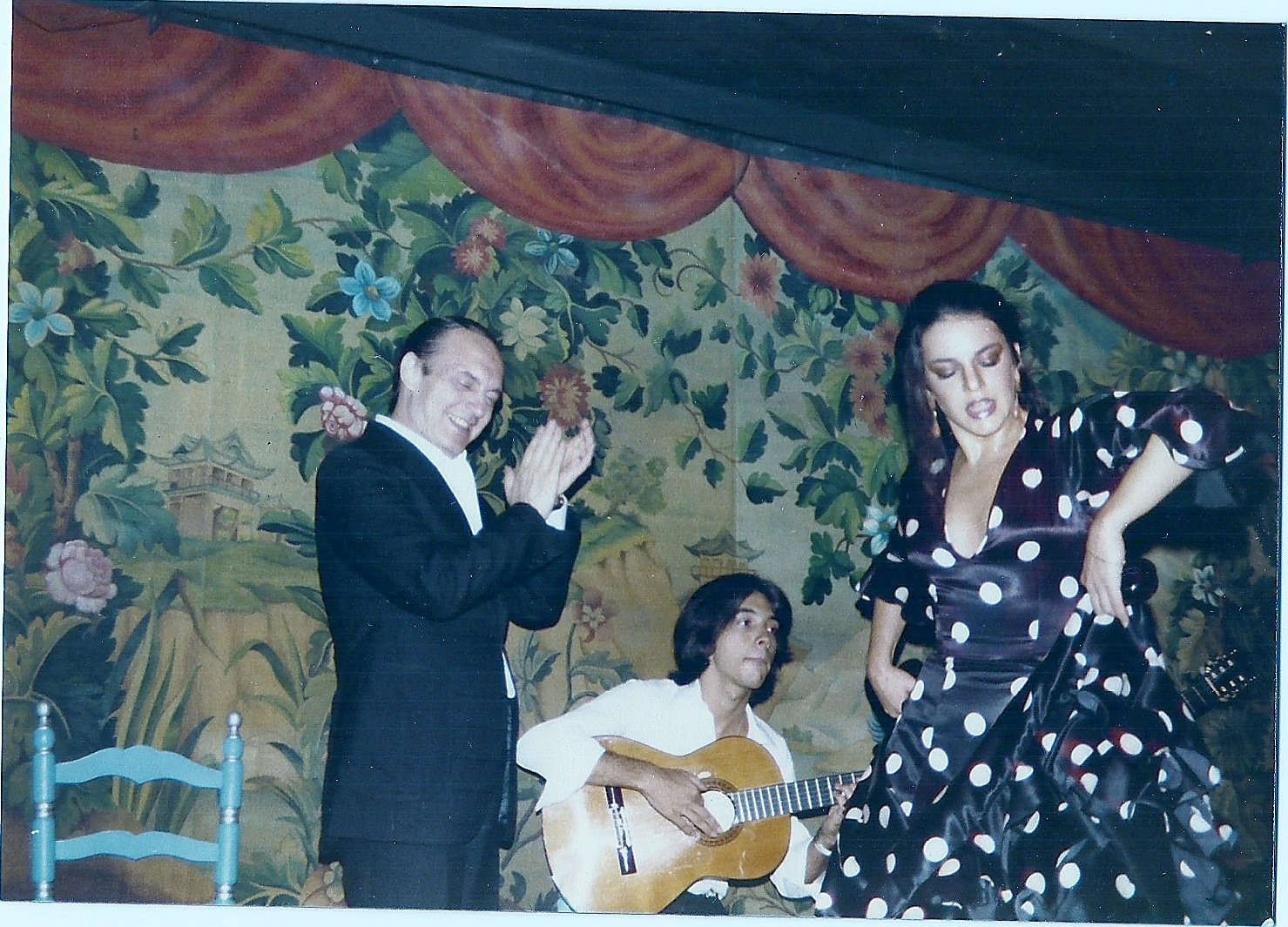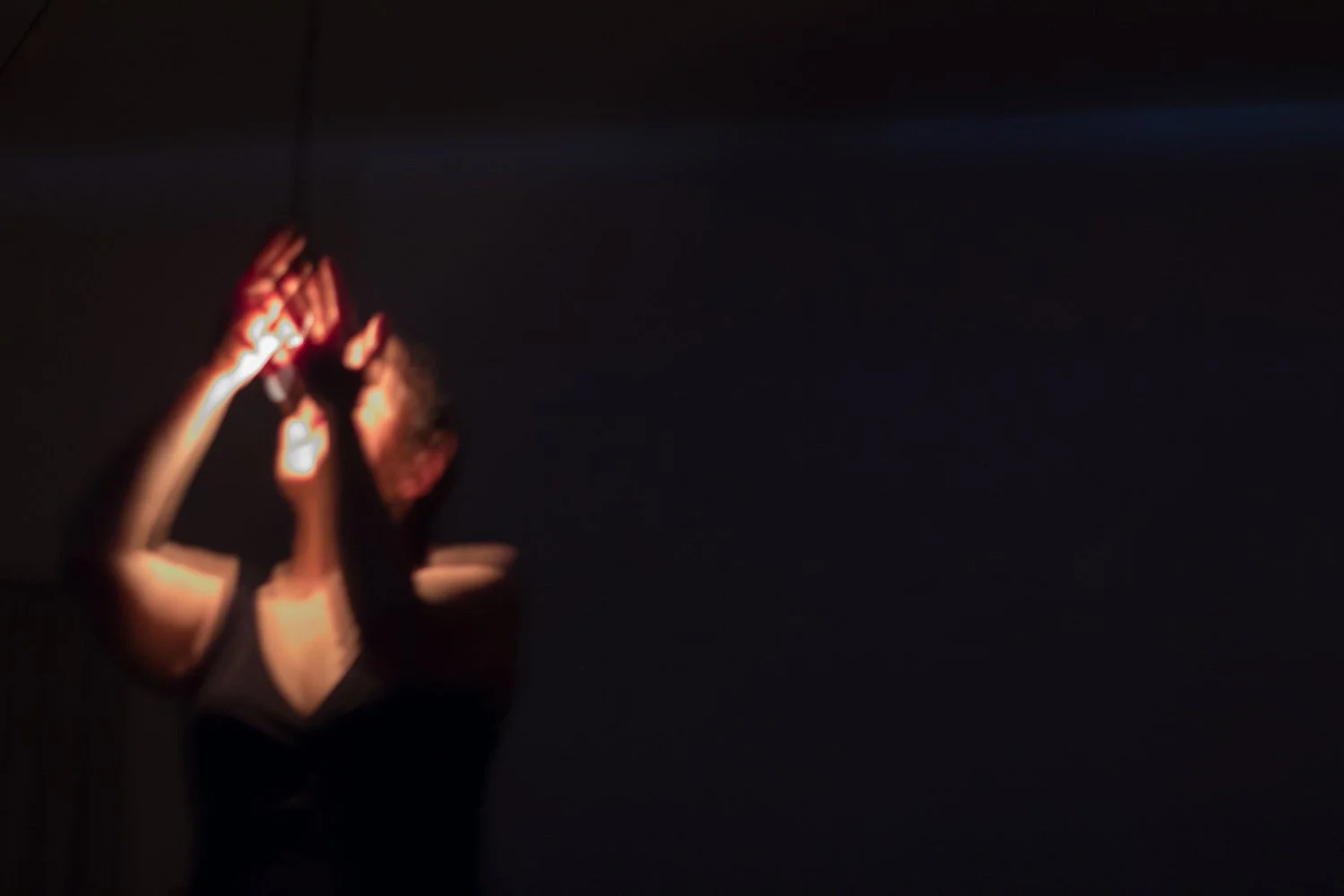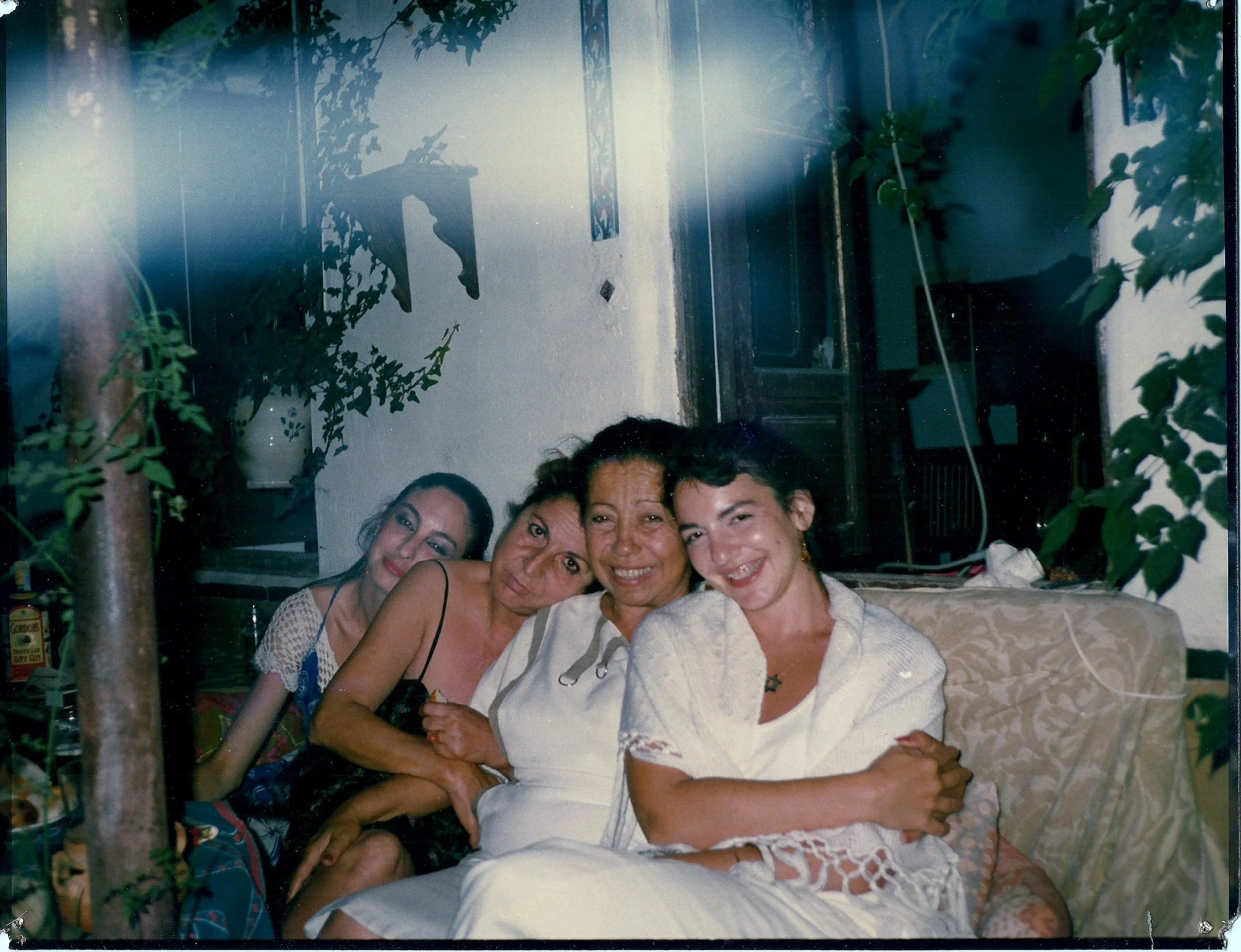
“La Meira”
Widely recognized as a master teacher and performer, Meira began her training in her native Los Angeles with Luisa Triana, Roberto Amaral and Carmen Mora. In Madrid in the 80s she studied by day and performed by night in several Madrid tablaos. Meira spent two years at Luisillo’s Los Cabales, two years at Manolo Caracol’s Los Canasteros, and for a year before returning to the U.S. was the solo attraction at the Arco de Cuchilleros. She has performed with many of the giants of Flamenco, including Antonio Canales, Tony “El Pelao” y “La Uchi,” Dolores Amaya “La Pescadilla,” Diego Carrasco, Manolo Soler, Juanito Habichuela and Jose Soto of “Ketama,” Enrique Soto, Ramon El Portugues, El Guadiana, El Indio Gitano, El Chato de la Isla, Pepe Montoya “Montoyita,” Arturo Pavon, Dolores de Cordoba, Tito and Diego Losada, Chuni Amaya, David Serva, Antonio de Jerez, Rafaela Reyes, "La Repompa de Malaga," and her daughters, Amparo and Raquel Heredia, Alfredo Lago, Antonio “de la Malena," and many more.
Photo Credit: Meira performing in Tablao Los Cabales with el Tío Pedro al cante, and Andres Heredia al toque, 1980.
Dr. Goldberg, more commonly known as “La Meira” in the flamenco community, has been the first dancer in Flamenco Vivo Carlota Santana, Fred Darsow Dance, and Pasión y Arte, performing throughout North America in venues such as Carnegie Hall, the Kennedy Center, and Jacob's Pillow. Meira has been featured in several documentaries and has been awarded choreography grants from Pew Charitable Trusts, American Dance Festival, and the New York State Council on the Arts. She choreographed “Carmen” under the baton of Seiji Ozawa, and, directed by Nic Muni, the first staging of the 1915 version of Manuel de Falla's “Amor Brujo” since Pastora Imperio performed it in that year, along with the rarely staged opera “La Vida Breve” for the Manhattan School of Music. The New York Times called the production “one of the more audacious, intriguing operatic undertakings to hit a New York stage this season.”
Photo Credit: David Whitmer
R A Í Z
R A Í Z seeks to create a ceremony of perforation and immersion in the rites of flamenco. The piece is fractal in its conception, jagged in its edges. It emerges from the poetic and transgressive realism of arte povera: a return to simple objects and messages, a stage where traces of nature and industry become alive. The Crone embodies the strength of instability. She enacts rejection and rebellion, memory and faith, feasting and solitude. Her pilgrimage maps a homeland containing many forces in tension. We wish to generate a contemporary quejío, to open spaces and sensations where our wings may find ground and our roots take flight.
Meira Goldberg / Dance; José Moreno / Music; Rafael Abolafia / Direction.
Poder de una Mujer, Solea,
Elba Hevia Y Vaca’s Pasion y Arte, 2002
Presented at Chachama Space in New York City in 2002; a Elba Hevia y Vaca Pasión y Arte's production Poder de una
al cante: Amparo Heredia Reyes
al toque: Christian Puig
percusión: Gonzalo Grau
palmas: Leilah Broukhim
Archive Selects
Los Canasteros flamenco 1982 - 1983
bailaor: “La Meira”
al cante: Guadiana, El Chato de la Isla
al toque: (l. to r.) El Pollito, Juanito Habichuela "El Camborio," Diego Losada
palmeras: (left of Pollito, l. to r.) unknown, Manuela Molina, unknown, Luisa Mendiola, (right of Diego Losada, l. to r.): Marta Heredia, Manuela, Angela Granados, Dolores de Córdoba
Excerpt La Boda de Luis Alonso, Flamenco Vivo Carlota Santana
al baile: “La Meira” Goldberg, Luis Montero
Excerpt Taranto (recordando a Carmen Mora),
Elba Hevia Y Vaca’s Pasión y Arte, Wilma Theater, Philadelphia, 2003
bailaora: “ La Meira” Goldberg
al cante: Antonio de Jerez
guitarra: Cristian Puig
“Flamenco is my passion and my idiom; it is where I feel most at home.”
“For flamenco, excellence is not a matter of conformity but rather of being present and saying something—dancing with intention. I depend on rhythm to create a flow of energy. Rhythm creates community, fostering moving collectively yet with individual sensibility. Rhythm leads to improvisation, singing and shouting, moving breath and sonic vibration. In the improvisational circle’s sound stream, my body resonates with flamenco’s power of insubordination, punching into the sonic space to “represent.”
Selected Reviews and write-ups from the New York Times:
Two Jilted Lovers, Sharing a Stage, But Not Their Man, By Steve Smith
Review/Dance; Spanish Dance Updated, By JackAnderson
Excerpt from 2005 performing Alegrías in Boston.
baile: Meira Goldberg
cante: David Castellano
guitarra: Cristian Puig
percusión: Gonzalo Grau
palmas: Laura Castellano
Excerpt of an Alegrías, Fred Darsow Valiente
performed at Dance Theater Workshop (New York Live Arts).
baile: Meira Goldberg
cante: Antonio de la Malena, Antonio de Jerez
toque: Alfredo Lago, David Serva
Excerpt Peni-el Cara a Cara,
Flamenco Vivo Carlota Santana, 1990
al baile: Meira Goldberg, Carlota Santana, Fred Darsow, Christi Schultz, Johanika Roth.
al cante: La Conja.
Meira performing in bata de cola, with David Castellanos al cante.






